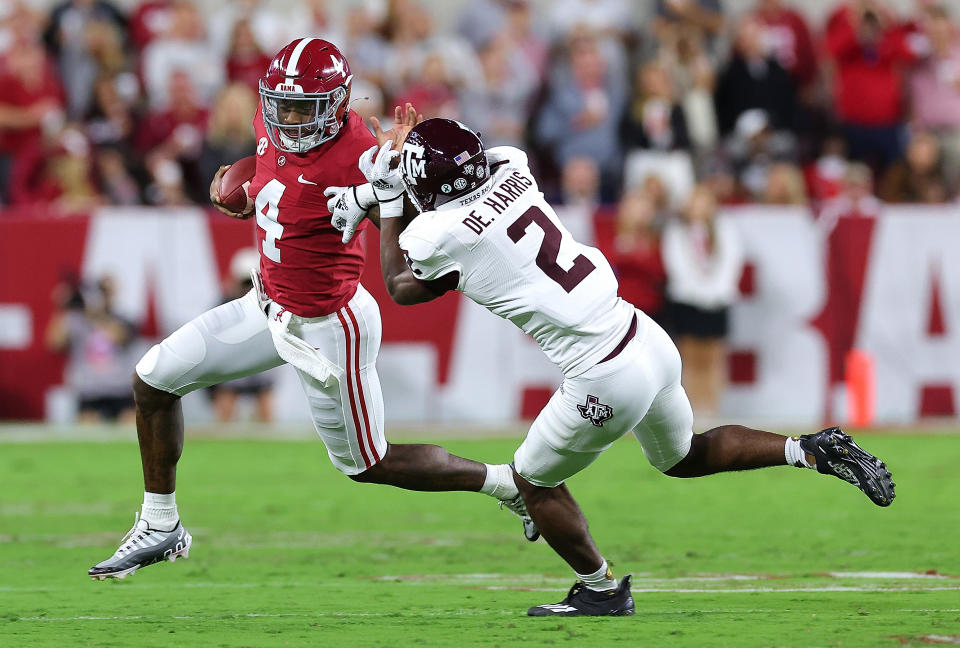LSU State of the Program: Secondary looks to build a foundation

Thinking about the lead-up to last season, I think I wrote more about LSU’s new-look secondary than anything else. Brian Kelly rebuilding the room from scratch was a major storyline.
A year later, I’m getting deja vu. LSU, once again, has taken to the portal to fill out the secondary.
Several of last year’s additions were on the older side, approaching the end of their eligibility or in the case of Mekhi Garner and Jay Ward, ready to declare for the draft.
Jarrick Bernard-Converse, Joe Foucha and Colby Richardson are gone, too.
A few younger players choose to exit through the portal. Raydarious Jones, Jaelyn Davis-Robinson and Damarius McGhee will all be playing elsewhere.
There’s no cause for concern yet with some of the portal’s best corners set to wear purple and gold. Here’s what the group looks like in 2023 and beyond.
The immediate future at corner

(AP Photo/Matthew Hinton)
Let’s talk about what LSU has coming at nickel first.
[autotag]Sage Ryan[/autotag], a five-star recruit, played 319 snaps last fall. He’s spent time at nickel and safety, making some plays here and there but also showing some inconsistency.
The talent is there and with more opportunity, Ryan might be able to settle into a role and get comfortable.
[autotag]Greg Brooks Jr.[/autotag] is LSU’s most experienced returnee. He played 867 snaps with 256 of those coming in a slot or corner role. Brooks has played plenty of safety too.
House is going to get his best combo of players out there. If Ryan breaks out, the optimal configuration likely puts Brooks at safety and Ryan at nickel.
On the outside, LSU will be counting on transfers.
The addition of [autotag]Denver Harris[/autotag] has garnered attention, with some calling it one of the best pickups of portal season.
Harris was one of the top corners in the 2022 recruiting class and looked to be excelling as a true freshman at A&M. Off-the-field issues arose, and Harris didn’t see the field.
Kelly has been adamant about making sure LSU is taking the right guys. You get the sense Harris wouldn’t be here if Kelly wasn’t more than comfortable with it.
If he progresses like he did last year, he’s the best corner on this roster and a potential star.
There’s [autotag]Zy Alexander[/autotag], the big corner from Southeastern Louisiana. He was one of the top defenders at the FCS level, so he’ll have to prove it at the SEC, but his size should aid him in the transition.
He fits the mold of the tall and long corners LSU added last year. Rounding out the transfer class is [autotag]Duce Chestnut[/autotag] and [autotag]JK Johnson[/autotag].
In Chestnut, LSU’s getting a guy who’s already played 1,403 career snaps in two years.
Johnson, from Ohio State, was one of the top corners of his recruiting class. He was inconsistent as a Buckeye but has a prior relationship with LSU cornerbacks coach [autotag]Robert Steeples[/autotag]. The hope is Steeples can get the best out of Johnson, who has the clear physical ability to play in the SEC.
Outside of the transfers, there’s [autotag]Laterrance Welch[/autotag].
Welch was one of LSU’s top high school signees in Kelly’s first recruiting class. He played 52 snaps last year but with plenty of spots open, he’ll get his chance to fight for more time.
The immediate future at safety

(AP Photo/Gerald Herbert)
At safety, the story is a little different.
The loss of Foucha hurts and there are some other questions with this group, but there is experience here.
Between Brooks and [autotag]Major Burns[/autotag], LSU has two key veterans. Burns was looking like one of LSU’s most important defenders prior to an injury forcing him to miss a large chunk of 2022.
Kelly and the staff have praised Burns for his communication ability on the backend.
Brooks, discussed early as a corner, has been playing SEC football seemingly forever. LSU will need some young guys to step up here, but the leadership in the room should help with that.
The long term: Building a foundation

(Photo by Kevin C. Cox/Getty Images)
This is what’s key about this year’s transfer class — several of the additions have years of eligibility left.
Harris has to stick around for at least two years. Others will be eligible to declare for the draft after this season, but I wouldn’t bet on a mass exodus.
What’s more promising is that LSU’s had a strong high-school secondary class.
The Tigers hoped to finish stronger on signing day. LSU lost [autotag]Daelyn Austin[/autotag] to Oregon and lost momentum with [autotag]Desmond Ricks[/autotag] in the final days of his recruitment.
But LSU added corners [autotag]Javien Toviano[/autotag] and [autotag]Jeremiah Hughes[/autotag], who are already enrolled. They’ll later be joined by [autotag]Ashton Stamps[/autotag], a three-star Louisiana native.
At safety, LSU got stronger with [autotag]Ryan Yaites[/autotag], [autotag]Michael Daugherty[/autotag] and [autotag]Kylin Jackson[/autotag]. All three are blue-chip recruits.
Throw all those names in with a young returning player like Welch, and you have a group that could be a foundation for 2-3 years. This crop can get LSU to a point where it’s not turning to the portal every year to build a secondary.
The bottom line

(Photo by Jonathan Bachman/Getty Images)
The secondary was a huge question last year. Nobody knew how everything would gel together but all things considered, it worked out well.
I think I feel better about the group entering 2023.
There’s too much talent here for a few guys not to be some of the SEC’s best. I think there will be consistency issues at times, but there will also be moments that resemble some of LSU’s best secondaries.
Steeples and [autotag]Kerry Cooks[/autotag] did a good job last year and should only be better this year given a similar situation.
[lawrence-auto-related count=3 category=1389]

